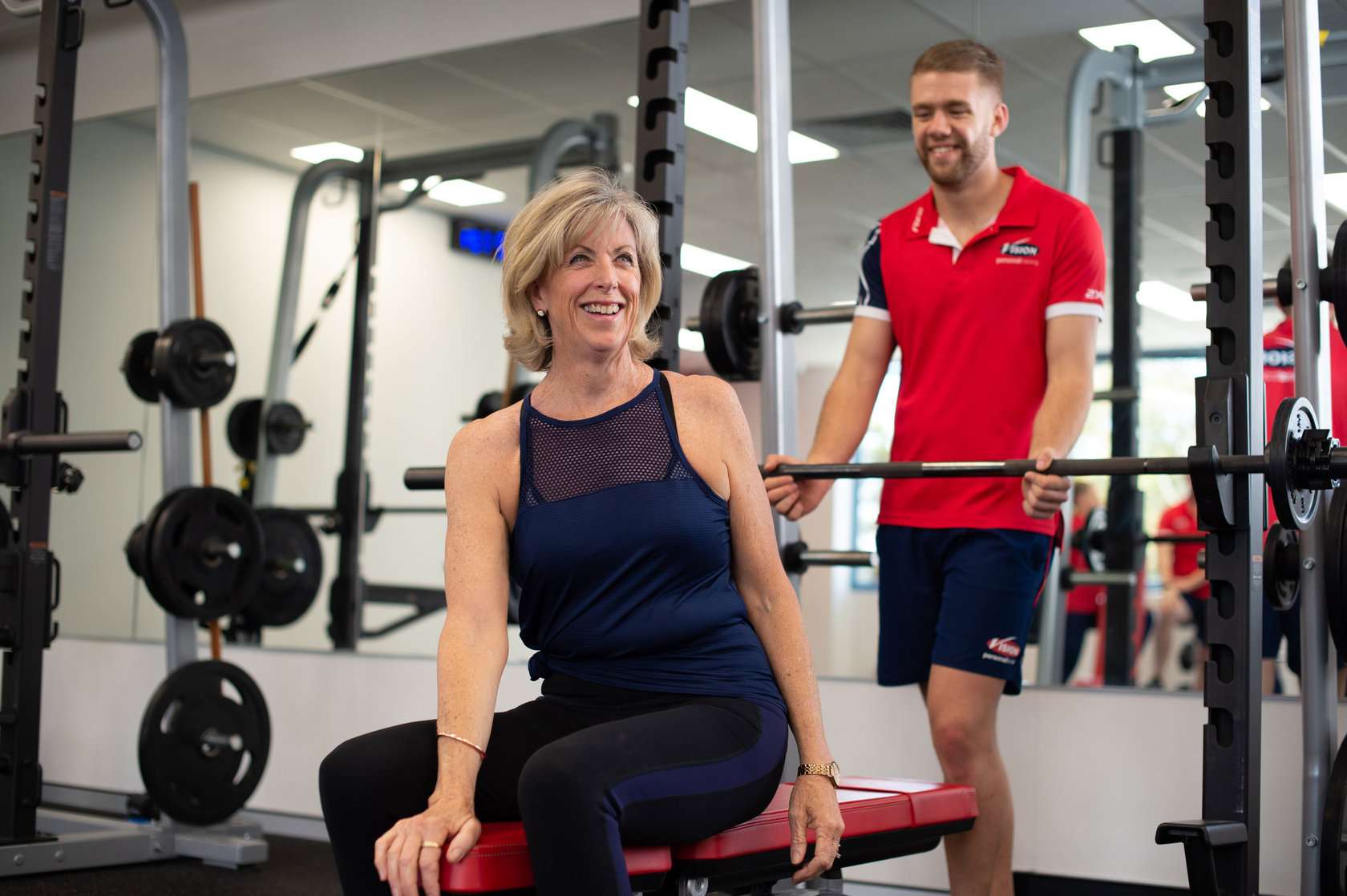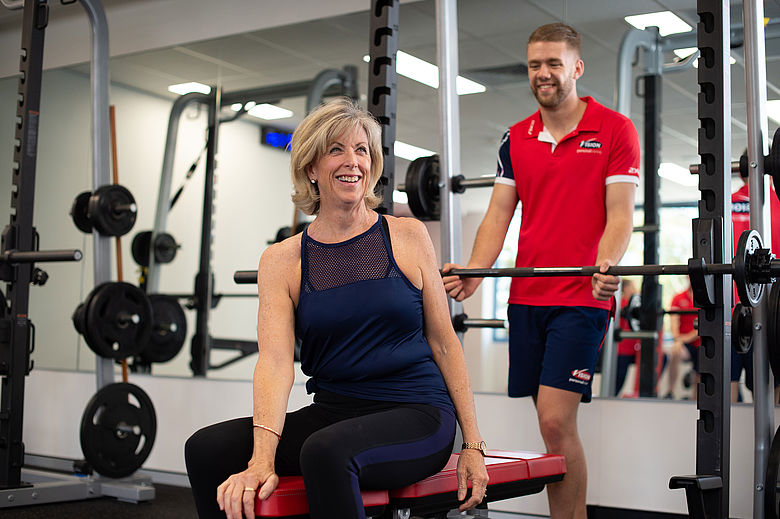One of the first go-to areas when embracing a body transformation is a check of your gut health. When I first meet with prospective clients at Vision it is very common for people have little to no awareness of their own gut health, often it would be considered something that they have never thought about. According to statistics published by State of Victoria, it is estimated that around 20 percent of Australians have irritable bowel syndrome (IBS) or some other expression of poor gut health. The small intestine has a surface area equivalent to the size of a tennis court, which is the area where your food is absorbed. The small intestine is also the home of your gut-immune system which is around 60 percent of your total immune system. The pertinent thing to remember, however, is the lining of the gut wall is just one cell layer away from the toxin pool of bacteria and undigested food particles. Lifestyle stress, antibiotics or anti-inflammatory drugs (aspirin or ibuprofen), low fibre high sugar diets and alcohol can cause this lining to break down, enabling the pollution of your immune system.
As a cardinal rule, the ecosystem in the gut must remain healthy for you to be healthy. People come to Vision for Results, poor gut health may be the single biggest issue holding you back.
Understanding and fixing gut imbalances
If you have bacterial or yeast overgrowth, bugs, parasites or worms, IBS may be the end result. If the bad guys take over, they start to ferment the food you digest, particularly sugar or starchy foods. This is called small intestine bacterial overgrowth (SIBO). Bloating right after meals is a common symptom of the condition and it's a major cause of IBS. A yeast overgrowth can lead to conditions known as Candidiasis, which causes multiple health issues such as skin rashes and immune dysfunction.
To test if you have any of these conditions please seek the assistance of a functional medicine practitioner to assist with analysis of blood work, samples and food intolerance tests.
Beyond that, here are some simple steps to help you get started on addressing a potential gut imbalance.
Strategies to restore optimal gut health
Put simply, the goal here is to reboot the gut with the good stuff. Below is a list of the things you will need to complete an effective reset.
Apple cider vinegar (to eliminate bad bacteria), probiotics (to put the good stuff in), glutamine (to heal the gut lining), curcumin phytosome (turmeric root) and fish oil (to reduce inflammation), and digestive enzymes (to assist in the breakdown of food).
When coaching a client, I encourage the following process. It can be followed for either 7 or 14 days, depending on the severity of the gut imbalance.
The first step is to eliminate all sugar and refined starchy carbohydrate foods from the diet. It is also crucial to remove red meat and other animal-based proteins.
Simply put, you will be eating all your calories from plant-based foods, healthy fats and a few fruits. Think green vegetables and berry fruits. You will be following a simple, whole food diet for 7/14 days. For fat intake, stick to coconut oil while cooking as it has anti-microbial and anti-fungal properties.
To assist with high-quality amino acid intake, you can consider supplementing with pea protein or a 10-20g daily serve of non-sweetened essential amino acid formula, pending your exercise levels.
The key here is ruthlessness. Go to your kitchen and throw it all out, and replace it with real, whole, fresh foods.
Every day of the process, take 10ml of apple cider vinegar first thing in the morning and feel free to follow this practice for 8-12 weeks. The next step is to repopulate your digestive tract with good bacteria. You can do that by taking a very high-potency probiotic twice a day for one to two months (look for at least 25 billion live CFUs from diversified strains of Lactobacillus, Bifidobacterium, and Saccharomyces boulardii). After a month, you can reduce the dosage to one a day. Take them in the mornings and evenings for the best results.
The next habit to nurture is the taking of digestive enzymes after meals. These enzymes help break down food as your gut heals. You may need these for two or three months; from my experience, many people see a benefit in taking them permanently.
It's very important to eat an anti-inflammatory diet. Inflammation underlies IBS and many other gut conditions, so you'll want to incorporate plenty of anti-inflammatory foods like wild-caught fish (salmon) into your diet. I also use herbs like curcumin phytosome (turmeric) to reduce inflammation and heal leaky gut and other gut conditions that can contribute to IBS. I also recommend fish oil to reduce inflammation. You will need to supplement 5g of Glutamine daily after any meal to help heal the lining of the gut. Failing that, zinc, Vitamin A and GLA (evening primrose oil) can be considered.
With my clients, I always encourage regular exercise. Exercise should be included from day one as consistent and regular exercise improves gut health. Even half an hour of vigorous walking can help. If you want something more intense, try high-intensity interval training (HIIT) or a structured weight-training program.
Another thing to consider during the process is stress management. Try taking up yoga or meditation.
After you complete the 7/14-day elimination, slowly start to reintroduce lean animal proteins. A good inclusion into your diet should include fermented foods. Include plenty of probiotic-rich foods like Kimchi, Kombucha, Miso, or Sauerkraut. Unsweetened biodynamic yoghurt is also suitable.
These are all foods that help your gut flora get, and stay, healthy.
The aim here is to nurture a keener awareness of how you feel after meals, in order to make better choices moving forward. The ongoing food plan should consist of high-quality lean proteins, balanced healthy fat intake, a load of green vegetables and some fruits. Consider starchy foods such as rice, potatoes etc, when necessary to fuel exercise for optimal recovery.
Even if you consider yourself to be in good health, a yearly gut reset can have an enduring impact on overall wellness.
Contact me => jclare@visionpt.com.au
*Disclaimer: Individual results vary based on agreed goals. Click here for details.

